Nickname(s) Brisbane Broncos Colours Maroon Gold Founded 5 April 1987 Arena/Stadium Suncorp Stadium Location Brisbane, Australia | Website broncos.com.au CEO Paul White Mascot Buck the Bronco | |
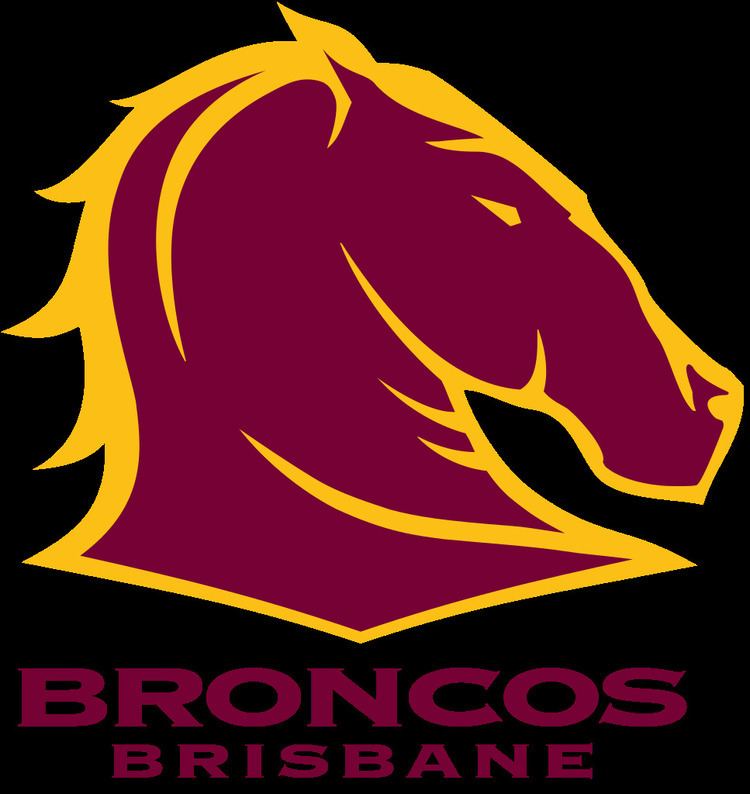 | ||
Full name Brisbane Broncos Rugby League Football Club Ltd. Ground(s) Suncorp Stadium (52,500) Fight songs The Broncos Song, Let's Go Broncos | ||
The Brisbane Broncos are an Australian professional rugby league football club based in the city of Brisbane, the capital of the state of Queensland. Founded in 1987, the Broncos play in Australasia's elite competition, the National Rugby League (NRL) premiership. They have won six premierships and two World Club Challenges. The Broncos have achieved four minor premierships during their 27 years in competition, making them the League's most successful club over the past two decades. Until 2015 Brisbane had never been defeated in a grand final, and between 1991 and 2009 they never failed to qualify for the finals. They are the most successful club since the National Rugby League began in 1998, winning a record three premierships in this era. They are also one of the most successful clubs in the history of rugby league, having won 63% of their games since their induction in 1988, second only to Melbourne Storm with 64%.
Contents
- History
- Emblem and colours
- Stadium
- Supporters
- Corporate
- Notable players
- Statistics and records
- Honours
- References
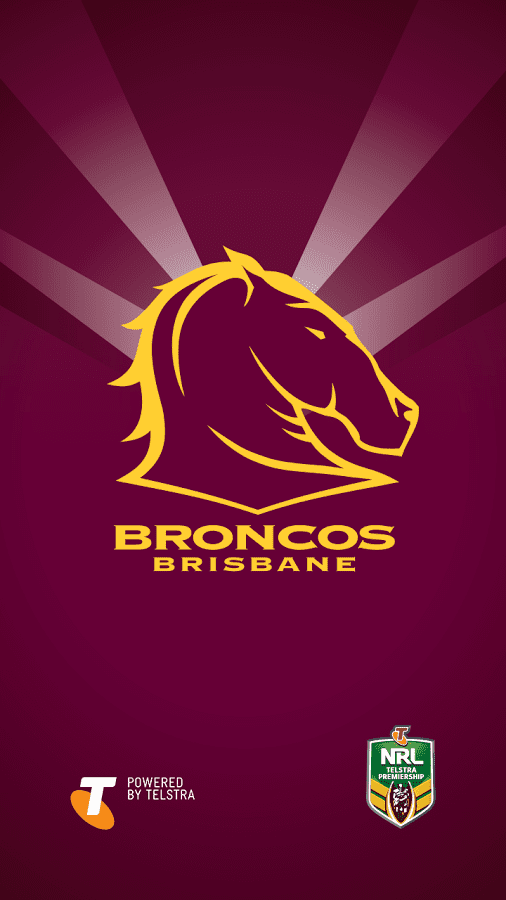
The club records the highest annual revenue out of all NRL clubs–$32.8m for the 2012 financial year–and is one of the most valuable clubs of any code in Australia, worth over $42 million. Along with financial competitiveness, the Broncos have been voted one of Australia's most popular and most watched football teams, and has one of the highest average attendances of any rugby club in the world; 33,337 in the 2012 NRL season.

The club was founded in 1987 as part of the Winfield Cup's national expansion, becoming, along with the Gold Coast-Tweed Giants, one of Queensland's first two participants in the New South Wales Rugby League premiership. The Broncos later became a dominant force in the competition before playing a significant role in the Super League War of the mid-1990s, then continuing to compete successfully in the reunified National Rugby League competition. The Broncos are based in the Brisbane suburb of Red Hill where their training ground and Leagues club are located, but they play their home games at Milton's Suncorp Stadium. They are the only publicly listed sporting club on the Australian Securities Exchange, trading as Brisbane Broncos Limited (ASX: BBL).
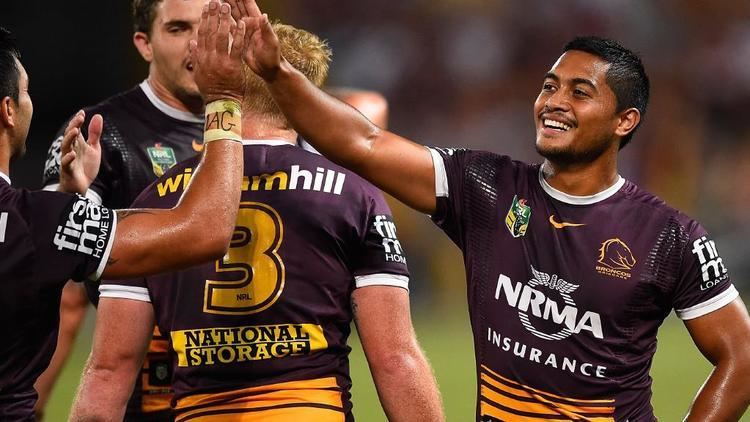
History
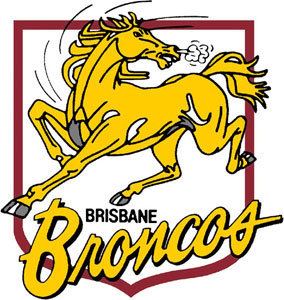
Queensland's success in the 1980s, the early years of the State of Origin series between Queensland and New South Wales, in addition to the inclusion of a combined Brisbane Rugby League team in the mid-week competition, convinced the New South Wales Rugby League (NSWRL) to invite a Queensland-based team into the competition. After tough competition between the various syndicates for the Brisbane licence, the Queensland Rugby League chose the bid of former Brisbane Rugby League (BRL) players, Barry Maranta and Paul "Porky" Morgan.
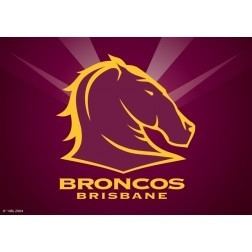
The Broncos secured the services of Australian Kangaroos captain Wally Lewis and former BRL coach Wayne Bennett. The team made their debut in the NSWRL's 1988 Winfield Cup premiership against reigning premiers, the Manly-Warringah Sea Eagles, and defeated them 44–10. However, after this promising start they failed to make the finals. In their second season they won the mid-week knockout competition, the 1989 Panasonic Cup. The club first tasted premiership success in 1992, and again in 1993, defeating the St. George Dragons in both years.
In 1995, the Super League War broke out. After threats of expulsion from the NSWRL, the Broncos were one of the last clubs to sign with the new league and all players followed suit (The Canberra Raiders, Canterbury Bulldogs and Cronulla Sharks were the first to sign, and it was only revealed many years later that the Broncos were in fact one of the last clubs to sign for either competition). Broncos CEO John Ribot moved to take over the running of the rebel Super League, leading to a perception that the conflict was orchestrated by the club. Brisbane won the only Super League premiership in 1997, before winning the first National Rugby League trophy in the re-unified 1998 competition.
1999 was disappointing for the club with a terrible early-season form hindering their attempt at a third consecutive premiership losing 8 of their first 10 matches. Club legend Allan Langer retired mid-season, perhaps as a result of the team's form. Despite the club's mid-season turnaround, which resulted in qualification for the finals after an 11-match winning streak, the team was eliminated by the Cronulla Sharks in the first week of the finals. However, the Broncos' rebounded in 2000 with their fifth premiership, defeating the Sydney Roosters. The game marked the retirement of veterans Kevin Walters and Michael Hancock.
Allan Langer returned to the club in 2002 for one season before eventually retiring. 2002 was also the beginning of Brisbane's "post-Origin slump", which has haunted the club in the years since. Many players represent Queensland in the State of Origin series, with 7 Broncos players on average included in the Queensland Origin team. This extra workload has caused a loss of form for the club immediately after the series, evidenced in 2003 when the ladder-leading Broncos lost 10 of their last 11 games. Despite faring better in 2004 and 2005, the team still struggled in the latter stages of the season, losing all of their finals matches.
In 2006, after a strong early and mid-season performance, the Broncos again entered the post-Origin slump, losing 5 consecutive games. However, they reversed this run of form, winning 6 of their last 7 games including the premiership decider against the Melbourne Storm and keeping their perfect Grand Final record intact. After a dismal 2007 season in which they only scraped into the finals, coach Wayne Bennett announced he would leave at the end of 2008 after twenty-one years as coach. Ivan Henjak, a former rugby league player who had been assistant coach with the Broncos since the beginning of 2006, was named their second-ever coach, commencing as coach for the 2009 season. Their 2009 season included their worst-ever post-Origin slump, featuring three matches in a row where the opposing team scored more than 40 points, concluding with a 56–0 loss to Canberra on 1 August 2009. They rallied around and in their match against Penrith two rounds later, they won 58–24. This snapback (after Penrith, they won the rest of their games that season) got them into the finals for the 18th year running, but they fell against Melbourne in the 3rd preliminary final by 40–10.
Their 2010 season started moderately: a 30–24 win against North Queensland, a 14–22 loss to Canberra, and a 48–16 hammering by the Warriors on 28 March 2010. On Monday 29 March, former Broncos player and recruitment agent Allan Langer was caught drink-driving in Brisbane's northside.
Apart from a late season 10–6 win against eventual premiers St George Illawarra, the 2010 season was one to forget; with injuries and poor form seeing the Broncos out of the finals for the first time since 1991. The Broncos missing the finals now means that every club has missed the finals at least once since the 2002 season.
In February 2011, it was announced that Ivan Henjak was to be sacked from the club, only three weeks before the beginning of the season. Anthony Griffin took over as coach for the 2011 season, becoming just the third head coach in the history of the Brisbane Broncos. He led the club to a third-place finish at the end of the season, losing to eventual premiers Manly in the preliminary finals.
2012 marked the Broncos' 25th season in the NRL competition. They finished eighth on the premiership ladder, and were knocked out of the finals in the first week, losing 33–16 to the North Queensland Cowboys in Townsville. 2013 saw the Broncos finish 12th on the NRL ladder, marking its lowest ever finish in the club's history and seeing the club out of the finals for only the second time since 1991.
In what is considered by some commentators to be one of the best Grand Finals in recent history the 2015 Grand Final against the North Queensland Cowboys went in to Golden Point overtime for the first time. Jonathan Thurston, after missing a match winning try conversion after the 80 minutes, kicked a field goal 2 minutes into the Golden Point period to win the match for the North Queensland Cowboys 17-16.
As of 2016, the Broncos are currently experiencing their longest premiership drought, having endured ten completed seasons without winning the premiership since their most recent success in 2006.
Emblem and colours
It had originally been planned for the Brisbane Broncos to adopt a logo incorporating both a kangaroo and a stylised "Q" which had been featured in the logo for the Queensland Rugby League for many years. However, with the Australian national rugby league team also known as the Kangaroos, this was deemed inappropriate and conflicting. The state flower the Cooktown Orchid and the Poinsettia which had long been used by Brisbane representative teams in the Bulimba Cup and midweek knockout competitions was also ruled out, along with other Australian animals such as the brumby, possum, galah and the kookaburra, which was used on Brisbane's Kookaburra Queen paddleships.
Having wanted to continue with the use of alliteration for local sporting teams such as the Brisbane Bullets and Brisbane Bears, the club's directors eventually decided on the nickname Broncos. The Australian newspaper has described the name as "Mystifyingly American".
The original club logo was first featured in the Broncos' inaugural season in the premiership in 1988 and was used until 1999. It used a mostly gold colour scheme, in line with the predominant colour on the team jerseys. In 2000, the club adopted a new logo with a more maroon design, which was much closer to the traditional colour associated with Queensland rugby league and Queensland sport in general. This design continues to be used to date.
Traditionally, the colours of the Brisbane Broncos have been maroon, white and gold, which have all long been linked to the history of rugby league in Queensland. Initially, the founders of the club favoured the official blue and gold colours of Brisbane City Council. However, Sydney advertiser John Singleton advised the board that "Queenslanders had been booing players wearing blue for more than three-quarters of a century." As a result, the traditional maroon and white colours of Queensland along with gold, symbolising the Queensland sunshine, were adopted as the club's colours.
In the inaugural 1988 season, the club's jersey design featured the top third being gold, the middle being alternating hoops of maroon and white and the bottom third being maroon. Although this design featured gold strongly, it did not please everyone as the jersey had to differentiate from the maroon and white of Manly-Warringah Sea Eagles and the maroon of the Queensland rugby league team. Following a number of design changes in the 1990s including a predominantly white jersey from 1997 to 1998, blue was added to the jersey in 2001 as a minor colour to show the aforementioned historical link with the colours of Brisbane. However, this was later dropped from the design in favour of a mainly maroon jersey with gold trim.
At the 1995 Rugby League World Sevens tournament, the club introduced a new combination of jersey colours – mauve, aqua and white. Brisbane Broncos Marketing Manager Shane Edwards stated that it "will become our Sevens strip... but we will never change the Broncos' colours." In 2001, following the release of the club's predominantly white with navy-blue and maroon away jersey, the National Rugby League ordered the club to produce a third jersey since the new away jersey clashed with the home jerseys of the Penrith Panthers, Melbourne Storm and New Zealand Warriors. An aqua strip using the same design as the jerseys used from 1999 to 2001 was worn, which was much derided by the local media. Following two years of public pressure the club dropped the jersey in favour of the design worn against Newcastle in 2003.
International Sports Clothing became Brisbane's kit provider in October 2016, replacing long-time suppliers Nike
Stadium
In their first five seasons, the Broncos played their matches at the 33,500 capacity Lang Park, the ground considered to be the home of rugby league in Queensland. However, following ongoing conflict with the Queensland Rugby League and Lang Park Trust due to a sponsorship conflict with the QRL having a commercial agreement with Castlemaine XXXX brewery with prominent signs around the ground, while the Broncos were sponsored by rival brewery Powers who were not permitted any permanent signs (the Broncos initially got around this by not using the change rooms at half time during games, instead sitting on the ground with a temporary protective banner surrounding them which just happened to have prominent Powers logos), the team relocated to the 60,000 capacity ANZ Stadium in 1993 (ANZ had been the main stadium of the 1982 Commonwealth Games). The club's home match attendance, which had averaged 19,637 at Lang Park, increased to 43,200 at the new ground in the first season following the club's first premiership title in the previous season. However, despite the team's second premiership in 1993, crowds gradually declined and it was not until 2002 that the club again registered more than the 1996 average attendance of 23,712. ANZ Stadium, as the Queensland Sport and Athletics Centre was called at the time due to sponsorship rights, was featured on an episode of The Mole in April 2002.
With the Queensland Government's $280,000,000 redevelopment of Lang Park, the team moved back to the refurbished and renamed Suncorp Stadium upon its completion in mid-2003. The more centrally-located stadium has begun to attract larger crowds, with the 2006 average attendance of 31,208 being significantly higher than the Newcastle Knights with 21,848 and about double the regular season competition average of 15,601.
The club record attendance for a regular season match is 58,593, set against the St. George Dragons in the final round of the 1993 season. The record attendance for a match at Suncorp Stadium is 50,859 for Darren Lockyer's final home game. Before kick-off at the Stadium an instrumental version of Led Zeppelin's "Kashmir" is routinely played.
The Broncos all-time home attendance record was set at ANZ Stadium during the 1997 Super League Grand Final when 58,912 saw the Broncos defeat the Cronulla Sharks 26-8 to claim the only Super League premiership played in Australia.
Supporters
The Brisbane Broncos have the largest fan base of any NRL club and they have been voted the most popular rugby league team in Australia for several years. A Broncos supporters group called "The Thoroughbreds" which is made up of prominent businessmen, made an unsuccessful bid to purchase News Ltd's controlling share of the club in 2007.
Average regular season attendance
Notable supporters
Notable supporters of this club, amongst others, include:
Corporate
The Broncos are the only publicly listed NRL club. The parent company of the Brisbane Broncos is Nationwide News Pty Ltd., a subsidiary of News Limited, which as of 30 June 2007, owns 68.87% of Broncos shares. John Ribot, a former first grade rugby league player in Queensland and New South Wales, was the club's original chief executive officer (CEO). Ribot left when he signed to become the CEO of the rebel Australian rugby league competition Super League. (p. 24,112) Shane Edwards, the Broncos Marketing Manager at the time, was promoted to CEO and later resigned. Bruno Cullen, who had been with the Broncos' off-field staff since 1989, became the club's third CEO in 2003.
NRMA Insurance are the major sponsors of the Broncos as of 2011, replacing WOW Sight & Sound. Nova 106.9 are the main radio sponsors after taking over from rival station B105 FM in late 2006. Live broadcasts of all Broncos matches are provided by both 612 ABC Brisbane (except games played on Monday Night) and 4MMM. Channel Nine Queensland also sponsors the Broncos, although former player Shane Webcke is signed to rival Seven Queensland.
In 2012, local Brisbane based company Firstmac Home Loans replaced WOW sight & Sound as sleeve sponsor for 3 years to launch into the retail financial services market. This sponsorship took only 9 days to negotiate following the announcement of WOW Sight & Sound going into receivership. Firstmac stipulated a unique clause in their contract that they could pay for 250 tickets to be distributed to WOW Sight & Sound staff that lost their jobs. Firstmac has since launched a Firstmac Broncos home loan in conjunction with their new sponsorship agreement.
Between 1997 and 2016, the club's apparel was manufactured by Nike. From the 2017 season, International Sports Clothing has replaced Nike as the club's apparel manufacturer.
Notable players
For a full list of Broncos representatives, see List of Brisbane Broncos representativesDue to the club's premiership success and its being the dominant Queensland team in the competition for the majority of its participation, the Brisbane Broncos' list of representative players is extensive. Consequently, there have been a large number of Queensland Maroons in the team. In 2007, a 20-man legends team was announced to celebrate the club's 20-year anniversary.
Statistics and records
The Brisbane Broncos are the second most successful club in terms of percentage of total games won, having won 63.63% of their games, as of 29 August 2012. This is marginally less (0.01%) than first placed Melbourne Storm. In their twenty completed seasons, the club has made a total of seven Grand Finals, winning 6 and losing 1 to the North Qld Cowboys in 2015. They are one of only two clubs to have won the World Club Challenge twice, and were the first club to do so on British soil. They also won the now defunct Panasonic Cup in 1989.
Former team captain Darren Lockyer holds the record for the most First Grade games for both the club and National League. Lockyer did also hold the record for the most points scored for the club, tallying 1,171 since his debut in 1995, until Corey Parker overtook him in August, 2015. Darren Lockyer also holds the club record of 272 points in a season, having achieved this in 1998. Steve Renouf holds the record for the most career tries for the club with 142. Renouf also shares the club record for the most number of tries in a season with Darren Smith at 23. Lote Tuqiri's tally of 26 points from three tries and seven goals in a single match against the Northern Eagles remains the club record for most individual points in a game. Corey Parker holds the record for most goals in a game kicking ten in a round one clash of 2008, breaking the previous mark of nine kicked by Lockyer in 1998 and matched by Michael De Vere in 2001. Parker converted ten from ten goals in the Broncos 48–12 win over the Penrith Panthers in which Parker scored 24 points placing him in equal second place on the most points in a match tally. Six players have scored four tries in a match for the Brisbane Broncos including Steve Renouf, Wendell Sailor, Karmichael Hunt, Justin Hodges, Denan Kemp and Israel Folau. Renouf achieved this feat five times from 1991 to 1998.
The club's biggest winning margin is 65 points, achieved in 2007 in a 71–6 victory over the Newcastle Knights. Their heaviest defeat is a 56–0 loss by the Canberra Raiders on 1 August 2009.
Honours
The Paul Morgan Medal is awarded annually to the Brisbane Broncos' player of the year. it is named after one of the club's founders, Paul 'Porky' Morgan.
